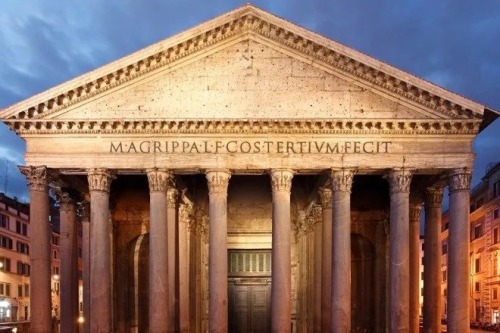Ancient Civilizations - Tumblr Posts
Thinking about how the moon has shone over civilisations that rose and fell thousands of years ago and that it still continues to shine over us with the same unwavering light
I've been reading the Odyssey, and one of the things that drives home that it takes place and was written in a very different time is how they have servants/slaves to bathe and clothe the rich.
I'm sorry, and I get that mentalities have changed, but I would find that so embarrassing. Like, bro, you're a physically and mentally totally healthy, fully grown adult, and you have other people wash you? I grew out of that when I turned five, my dude.
Also, if you see America as the whole freaking continent and not just the US (because America IS, in fact, the whole continent, not just one country!). Then the list would never end because: Prehispanic architecture! The pyramids, the ruins, some of them are so old people aren't even sure just how old exactly!

Tajin, Veracruz, México.

Tenochtitlan, Mexico City, Mexico.

Machu Picchu, Peru.
And I could go on, and on, and on. And these are the things more obvious. There's so much more!
So yeah, I agree that people shouldn't buy into the notion that there was nothing in the American Continent before the Europeans 'discovered' it. (Nor that what they brought was any better than what was already here...).
the main problem i have with america is that nothings old as hell there. i cant be so far away from a castle it damages my aura



Abzu - Into the Water
Dive into the Ocean of Time
To Know, Water..
It’s a special illustration used with my graphic design in another production by VVGO (Virtual Video Game Orchestra) : “Then Were Created The Gods In The Midst Of Heaven” from ABZÛ featuring composer Austin Wintory and 209 community recordings! Thanks to this unique virtual choir & orchestra underwater performance -> [link] I found myself swimming (and singing) in the great waters of Abzu again..
_
You can find me here too: Deviantart | Instagram | Facebook | Twitter | Youtube.
If you’re interested: My page | Commissions | Redbubble Shop | Etsy shop.
Artist Support: Ko-fi
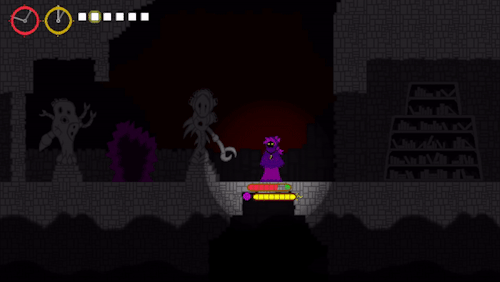
Chapter 5: Mount Evermore Also known as the hollow mountain or the shadowlands, Mount Evermore is rumored to be older than the world itself. Great secrets are said to be concealed in its depths, but journeying inside is highly dangerous, as ancient stone creatures roam the darkness. Few of those who enter this realm of shadow ever come out, and those who do are forever changed by the forbidden knowledge they found.

Who or What is the Ark of the Covenant?
Eli Kittim
The Ark of the Covenant was a gold-plated wooden chest that housed the two tablets of the covenant (Heb. 9:4). Jewish folklore holds that the ark of the covenant disappeared sometime around 586 B.C. when the Babylonian empire destroyed the temple in Jerusalem. Throughout the centuries, many writers, novelists, ufologists, and religious authors have invented two kinds of wild and adventurous stories about the ark of the covenant. They either talk about fearless treasure-hunters, archaeologists, and paleographers who went hunting for the Lost Ark of the Covenant, or about ancient alien civilizations that made contact with humans in prehistoric times. This has led some authors to the startling conclusion that the ark of the covenant may have been part of a highly advanced ancient-alien technology. But the Biblical data do not support such outrageous and outlandish conclusions.
From a Biblical standpoint, both the “ark of the covenant” and “Noah’s Ark” are symbols that represent salvation in the death of the Messiah. Isaiah 53:5 reads thusly:
he was pierced for our transgressions;
he was crushed for our iniquities;
upon him was the chastisement that
brought us peace, and with his wounds we
are healed.
We can also call it the covenant of salvation based on the atoning death of Christ (Heb. 9:17). If you pay close attention to the biblical symbols and details, you’ll notice that both Noah’s ark and the ark of the covenant represent some type of casket, which signifies the atoning death of the Messiah (that saves humanity). Christ’s covenant is based on his death. Without Christ’s death there is no salvation. That’s what ultimately redeems humanity from death and hell, and allows for resurrection and glorification to occur. Christ, then, is the ark of the covenant, also represented by Noah’s ark (which saves a few faithful humans who believe in God). The caskets are of different sizes. The smaller casket (the ark of the covenant) could only carry one person (the Messiah), whereas the larger one (Noah’s Ark) can accommodate all of humanity (symbolizing those who are baptized into Christ’s death). According to the Book “After the Flood,” by Bill Cooper, “The Hebrew word for ark, tebah, may be related to the Egyptian word db't, = ‘coffin.’ “ Romans 6:3 declares:
Do you not know that all of us who have
been baptized into Christ Jesus were
baptized into his death?
In other words, it’s not Christ’s incarnation but rather his death that saves humanity. All those who follow him and are baptized into his death are saved!
How is Christ the “ark of the covenant”? Christ is the Word of God (Jn 1:1), the Logos, or the Law of God (the Torah)! That’s why the ark of the covenant doesn’t dwell on earth but in heaven. Rev 11:19 reads:
Then God’s temple in heaven was opened,
and the ark of his covenant was seen within
his temple. There were flashes of lightning,
rumblings, peals of thunder, an earthquake,
and heavy hail.
Who dwells within God’s throne-room, within God’s temple, and is represented by the ark of the covenant? Answer: Jesus Christ! A similar scenario takes place in Revelation 21:2-3:
And I saw the holy city, new Jerusalem,
coming down out of heaven from God,
prepared as a bride adorned for her
husband. And I heard a loud voice from the
throne saying, ‘Behold, the dwelling place of
God is with man. He will dwell with them,
and they will be his people, and God himself
will be with them as their God.’
Notice that the terms “God” and “the dwelling place of God” are used interchangeably. In other words, the metaphors of the dwelling place, the tent of meeting (ἡ σκηνὴ τοῦ θεοῦ; i.e. the tabernacle), the temple and its sacrificial system, as well as the ark of the covenant, all represent God and signify the blood of the covenant or the blood of the lamb (1 Pet. 1:19; Rev. 7:14; 12:11)! Christ is not only the mediator between God and man (1 Tim. 2:5), but also the high priest who offers up his own life for the salvation of humanity (Heb. 7:17). According to Acts 4:12, there is “no other name under heaven given among men by which we must be saved”: not Moses, or Muhammad, or Buddha, or Krishna, or Confucius, or Allah, or Yahweh. According to Philippians 2:10-11:
at the name of Jesus every knee should
bow, in heaven and on earth and under the
earth, and every tongue confess that Jesus
Christ is Lord, to the glory of God the
Father.
Therefore, he who is within the throne-room of God, and “among the people,” is none other than the Second person of the Trinity, Jesus Christ, who “will dwell with them” forevermore (Rev. 21:3). It’s a throwback to Leviticus, which prophesied the incarnation of God, but which the Jews misunderstood and misinterpreted. Leviticus 26:12:
I will be ever present in your midst: I will be
your God, and you shall be My people.
Compare Revelation 21.3:
He will dwell with them, and they will be his
people, and God himself will be with them
as their God.
How much of history is just kids making play-things? Like all those small, little rock circles and sticks with holes and small walls with eye holes and badly made wooden swords? How much of history is being mistaken for something Very Important, but was just some people goofing around?
I love how archaeology proves that people have always existed. Sometimes it just feels fake? Like we as a people just sprung up out of nowhere 500 years ago. But no, actually, I am related to people who lived in caves and loved people and had Neanderthal friends and who organised bear bones and got angry and painted on walls with paint and sailed across oceans and made food. Like there is actual tangible things that people made all those years ago, and now these objects are being handled again thousands of years later. Crazy. Will my stuff be looked at in another thousand years?? I am bamboozled!
Values of Atlantis
💧 Focus | the ability to complete tasks
💧 Prioritizing | selecting what’s most important
💧 Patience | waiting for things to develop or end
💧Presence | being alert and observant
💧Service | helping others
💧Heart | being generous and loving
💧Wisdom | the abillity to extract lessons from events
💧Freedom | feeling free to do what you want
💧Kindness | having empathy, politeness
💧Harmony | seeking inner peace
💧Laughter | laughing, playing
💧Pure love | based on self-love
💧Promises | keeping promises already made
💧Calmness | during tense situations
💧Decision-making | in critical/key moments
⤵️
Atlantis' Values 💛 So many souls are aware of Atlantis and have a general intuitive idea regarding it, but they may not know that the reason they are aware is because they are meant to embody these values. Many types of Stellar Beings share certain basic core values, but each type has something unique to teach others. The values of Atlantis are integrated every time the Atlantis timelines activate, together with all other aspects of the Atlantis blueprint.
All these values are sourced from my inner wisdom and shared for self-awareness and reconnection with the soul's essence. Feel free to message me if you'd like to connect with your soul origins.
I'd appreciate your support towards Ancient Astarwis with a tip through the link in my bio.
Peace 🩵✨💫🌈
@ancientastarwis
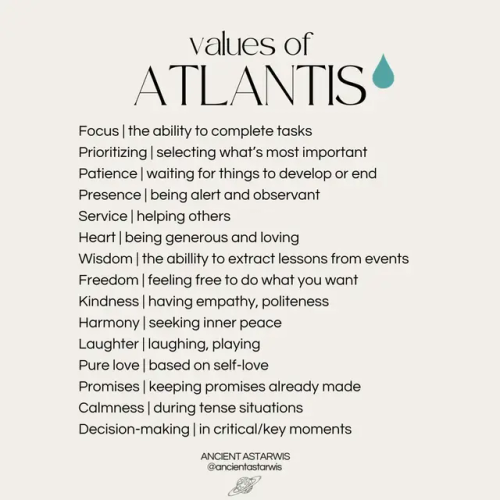

Satyrs at play

The story of an ancient lost civilization in the clip is inspired by the flood theory... The parable of Noah is similar to records in the culture of India and Persia. The global flood is also remembered by the indigenous people of Australia, the aborigines. Civilizations of South and Central America even speak of multiple global floods. The global flood (end of the world - Armageddon) is present in every culture and religion. From Gilgamesh to the Mayan records, the world may have suffered partial destruction even multiple times. Today, archeology redefines the time of existence of human civilization. Older artifacts that do not match earlier visions are being found. "Gelung Masa" (Time Loop) is a piece by the Gotard project inspired by the theory of infinity of time - because can it be certainly denied that the global civilization has already existed many times, just as the records of ancient American civilizations say?
About the Pantheon in Rome, Italy…
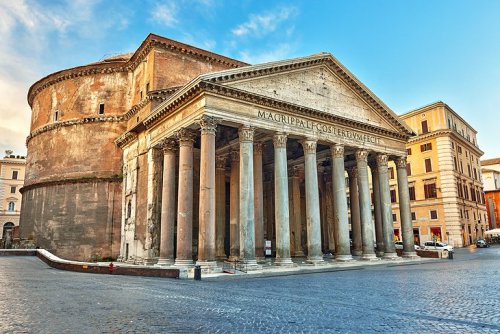
The Pantheon in Rome
The Pantheon in Rome, now a church, was built as a temple to all the gods. It has been a shrine for architects since the Renaissance. It is also a worthy tribute to the skills of the ancient Roman masons and engineers who built it and the incredible alchemy of their concrete mix.
If there Was a competition to find the most durable and beautiful concrete structure ever built, the Pantheon in Rome would most surely win the prize. It also stands as a monument to the genius of Roman concrete.
Commissioned by Hadrian (who was emperor 117-138 CE) as a temple to all the gods, the Pantheon replaced Agrippa’s earlier temple following a fire. It is still the most visited site in Italy, having weathered centuries of tourists, floods, wars and earthquakes.
Its huge concrete dome – 43.4m in diameter and 21.75m high – was unrivalled in size until the building of Florence Cathedral in the 1400s, and is still the largest ever made with unsupported concrete.
“The mastery of building something so daring and having the structure resist essentially without any structural support for more than 19 centuries is simply extraordinary,” says Renato Perucchio, professor of mechanical engineering and director of the Archaeology, Technology, and Historical Structures Programme at the University of Rochester in the US.
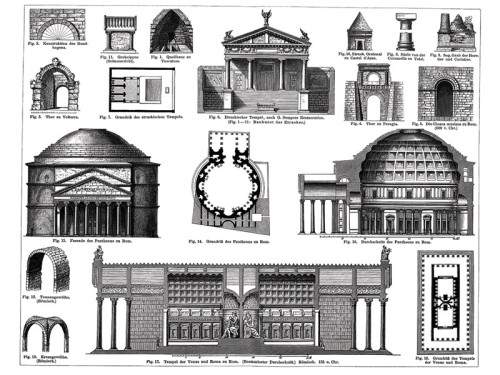
So how did the Romans do it, what were the secrets of their concrete recipe and what lessons can architects and civil engineers learn from its construction today?
As every builder knows, foundations are everything. One of the most overlooked aspects of the Patheon’s remarkable construction lies below its famous dome. Although Rome is not on one of Italy’s major seismic zones, it has known earthquakes. Many historians believe seismic activity caused damage to the Colosseum. Moreover, until some of the River Tiber’s tributaries were buried in the late 19th century, it was also subject to major flooding.
The foundations of the Pantheon were made of concrete, originally 4.7m deep and 7.3m thick. During construction, however, they cracked due to the marshy, clay land below. “For this reason, a second reinforcement ring was built, projecting three metres beyond the original perimeter,” according to the Archeoroma website. Thick buttress walls were also built to the south of the building anchored to the Basilica of Neptune next door. “This had the effect of stabilising the structure by counterbalancing the forces and weights at either end of it,” Archeoroma writes.
Romans did not invent concrete. It had already been around for hundreds of years before the Pantheon was built.
Curiously that accolade probably goes to the Nabatean Bedouin tribes of the land that is today southern Syria and northern Jordan, who were using it to create hidden underground water cisterns around 700BC.
The basic concrete recipe the Romans followed can be found in the Roman architect Vitruvius’s book ‘De Architectura’, published 100 years before the building of the Pantheon. He described how to make concrete out of lime and pozzolana sand, a type of volcanic ash found near Naples, all mixed with stone mass.
Different aggregates were used to give the concrete diverse densities. Travertine limestone gave the Pantheon’s foundations a density of 2,200kg per cubic metre, while lighter rock was chosen for the dome.
Pozzolans, made of siliceous and aluminous materials, possess little or no cementitious value, but when mixed with water, react chemically with calcium hydroxide at ordinary temperature to form cementitious compounds.
It was the chemistry of this material that formed the basis of the durability of the dome, enabling it to survive two millennia without the steel tension rods used today.

Indeed, the Romans understood that the bigger the structure, the stronger it was, because the simplest way to keep concrete in compression is to put heavy stuff on top of it, like more concrete.
It is a trick still used today. Many large concrete dams are either gravity or arch structures that rely on their own weight and geometry to withstand water.
However, the circular structure of the dome meant that before the ancient engineers could start making its concrete ceiling, they needed to figure out how to direct the weight away from the centre. If they didn’t, and removed the wooden structure holding it in place, the 3,000 tonnes of concrete used to make the dome would have pushed outwards and the whole edifice would have collapsed under its own weight.
Even the kind of scaffolding framework used to support such a framework is still under discussion. “Think of the design of the scaffolding that holds a structure of that weight,” says Perucchio. “They [the ancient Romans] had a high mastery in using timber framing in a way that no other earlier cultures had developed.”
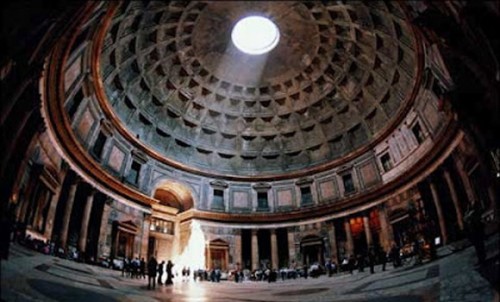
Today when we build in concrete, we introduce a steel tension rod which picks up half of the stresses in the concrete. The Romans used their ancient concrete recipe, and an abundance of highly skilled artisan labour, who tamped the stiff mixture into moulds and walls, rather than pouring it as is done today.
To build the dome, the Roman builders constructed a solid base, a wall six metres thick in the shape of a rotunda, to act as the foundation for the ceiling. They then used the vertical walls on either side to buttress the dome itself.
As the ceiling rose towards its apex, the master craftsmen mixed increasingly lighter aggregate materials into the concrete.
This principle of using different weights of aggregate goes from the heavy travertine used in the base right up to the top of the dome.
“It doesn’t look like it from the inside but on the outside it’s a very thick dome, but relatively light,” says Norbert Delatte, head of the School of Civil and Environmental Engineering at Oklahoma State University.
In some parts, the ancient builders mixed in small clay vases, called amphorae, to control the weight.
The aggregate of the concrete used to make the upper dome region consists of alternating layers of light tuff, found in abundance north of Rome, and pumice stone, the material we use today to file off rough skin. The concrete substance at the top of the dome had a density of just 1,350kg per cubic metre.
To make the ceiling even lighter, masons moulded recessed concrete waffle-like panel bricks called coffers; five layers of these bricks formed the interior ceiling. They pounded the concrete into the moulds using some kind of tamper, most likely made of wood or iron.
This meant that aesthetically, they had allowed an area of the dome to be decorated while simultaneously reducing the amount of concrete necessary for the dome itself.
At the top, the Pantheon’s crowning glory is an open oculus, 7.8m in diameter, which allowed light to shine in, adding to the sense of wonderment the building still incites today. But most importantly, it meant the apex of the dome was made of the lightest material of all, air.

Today, engineers all over the world are looking at the chemical properties of Roman concrete to see if it can be reproduced today to make buildings that last longer. Although the basic ingredients were set out by Vetruvius, modern measuring technologies are making it easier to ascertain the exact chemical properties from just small samples of material.
Yet the clever use of engineering and the unique Roman concrete material is not the only reason this enduring temple to all the gods is still there to inspire awe today. History also played a role in its staying power. The event that probably most ensured its long destiny happened in 609 AD, nearly 400 years after it was built.
The Emperor Phocas, the Byzantine emperor in the east, gave the Pantheon to the Catholic Church in Rome. The Vatican has used it as a place of worship ever since, while its formidable structure also still serves a shrine for architects and engineers the world over.
By Hilary Clarke.
